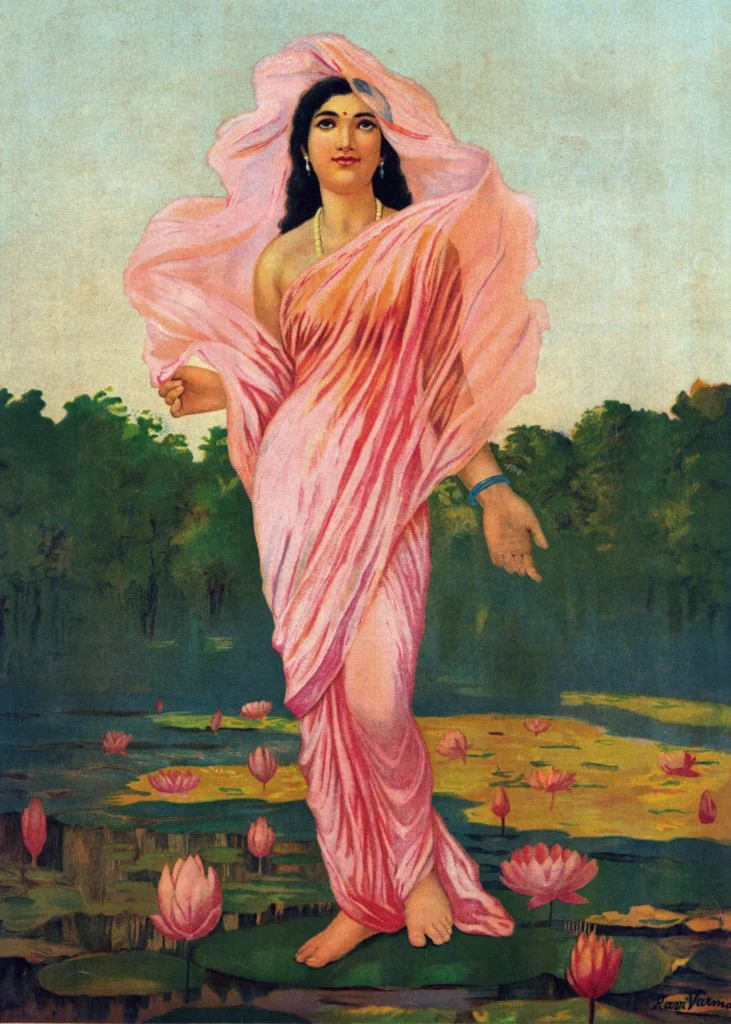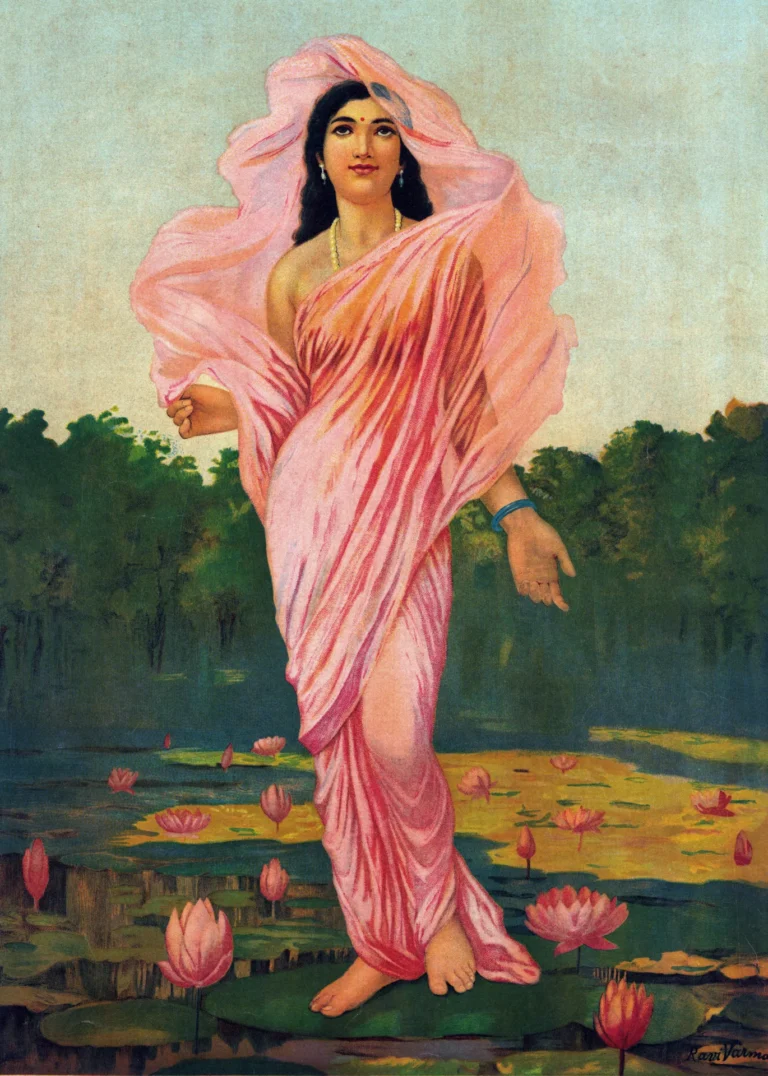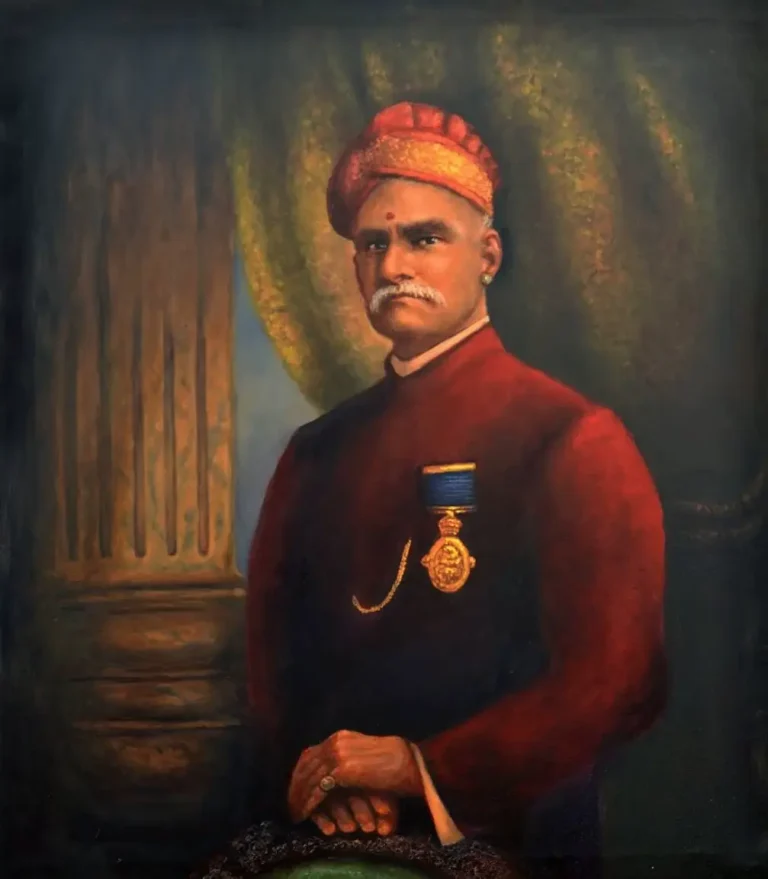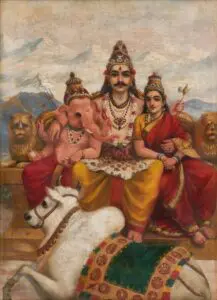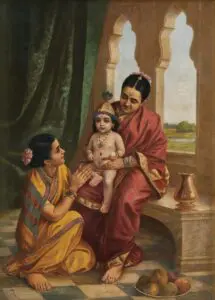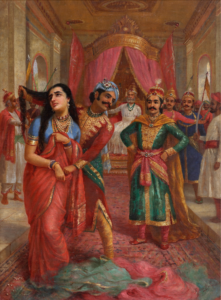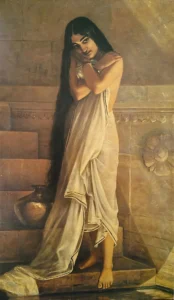Padmini - The Lotus Lady
Created by the eminent artist Raja Ravi Varma, Padmini, the Lotus Lady is a stunning chromolithograph representing Indian beauty and mythology. The artwork captures a woman poised gracefully, symbolizing purity through the lotus flower. Although Varma passed away in 1906, this piece emerged later, illustrating his enduring legacy. This portrayal of an apsara showcases Varma’s unique ability to merge traditional elegance with innovative techniques, making it a cherished masterpiece in Indian art history.
Circa 1930
About the Artwork
The creation of Padmini, the Lotus Lady holds a fascinating story intertwined with the life and legacy of Raja Ravi Varma. Though he died in 1906, his unique approach to art transformed Indian visual culture. The chromolithograph was produced in a time when reproductions of art began to flourish, allowing for greater accessibility to Varma's work. Padmini symbolizes the ideals of beauty in Indian mythology, resonating with audiences who appreciated both the historical significance of women in culture and the aesthetic harmony captured through Varma's skilled craftsmanship. As part of a series featuring apsaras, this artwork reflects the idealization of femininity and cultural narrative in Hindu tradition, keeping the artist's spirit alive through years of appreciation.
Did You Know
Liked what you see? Add it to your collection.
Enjoyed reading? Share it.
... continued
Artist and Medium
The artwork is a chromolithograph, a type of color lithograph, which was a popular medium for mass-producing art in the early 20th century. Raja Ravi Varma was a pioneer in Indian art, known for blending traditional Indian themes with European techniques.
Date and Context
The piece is dated to around 1930, although Raja Ravi Varma himself passed away in 1906. This suggests that the chromolithograph was produced posthumously from his original designs or paintings. It is part of a set of three portraits of apsaras (nymphs) or ideal categories of women.
Description
Padmini, the Lotus Lady depicts a woman in a serene and elegant pose, often associated with the lotus flower, which is a symbol of beauty and purity in Indian culture. The artwork showcases Varma's skill in capturing the essence of Indian beauty and mythology through his art.
Availability and Reproductions
The artwork is available in various forms, including canvas prints, art prints, and posters. These reproductions can be found on platforms such as Fine Art America, Amazon, and other art marketplaces. The prints are often produced on high-quality materials, such as acid-free papers and canvases with archival inks, ensuring they last without fading or losing color.
Quality and Framing
Many of the reproductions are offered with advanced framing options, including high-quality canvas, UV-resistant and waterproof materials, and frames made from aviation-grade aluminum alloy. Some versions also come with convenient features like flip frames for easy picture replacement.




